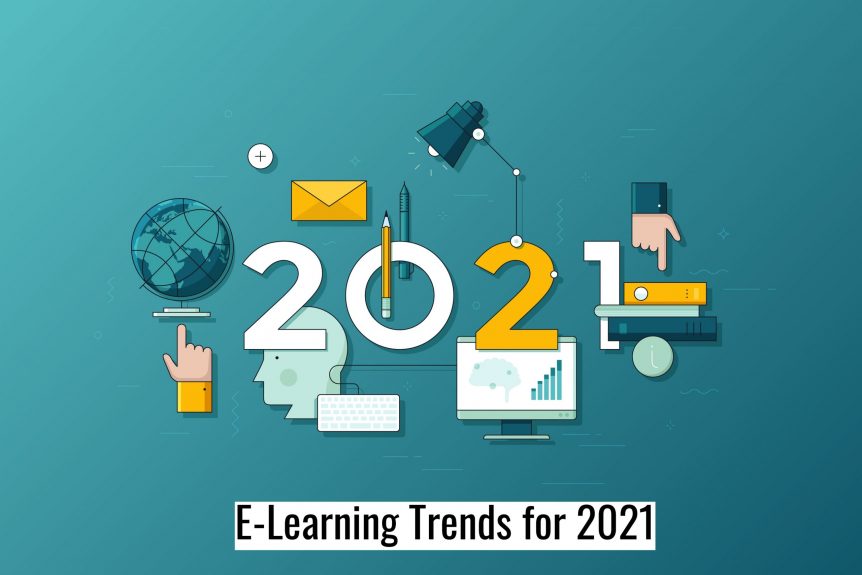10 E-Learning Trends for 2021
What are the key technologies, strategies, and methods that will drive e-learning forward in 2021?
Things like mobile learning, microlearning, and gamification will, of course, continue to be important. However, examples like this could have been on a list of yearly trends for the past five-plus years. What about new and exciting developments in e-learning, the things that will transform training across multiple industries?
What about the impact of COVID-19 on the future of training and e-learning, and how will further automation and digital transformation impact corporate training requirements?
Below we look at 10 of the most important e-learning trends to be aware of in 2021.
2021 E-Learning Trends
-
E-Learning Will Continue to Replace Classroom-Based Learning
Many business experts believe the shift to remote learning during the COVID-19 pandemic will not be fully reversed once it is over.
In addition, businesses in many industries either tried e-learning for the first time or enhanced their e-learning activities as they adapted to the new business realities forced on them throughout 2020.
Therefore, we are likely to see a continuing shift away from classroom-based training to e-learning.
-
Further Integration of Artificial Intelligence (AI) Into E-Learning
AI is becoming increasingly important in a range of areas, and e-learning is not immune. Examples of the use of AI in e-learning include creating more personalised learning experiences and providing deeper analysis of training data, among other things.
-
Growing Adoption of Adaptive Learning
Another area that AI will impact is adaptive learning.
Adaptive learning involves the development of e-learning courses and modules on a model that is similar to Netflix. In other words, where an algorithm develops an understanding of people using the system so it can then direct learners to suitable courses and content, similar to the way that Netflix offers recommendations based on what its algorithm learns about viewing preferences.
-
Increasing Focus on Learning Experience
The learning experience has a much wider scope than the content of a particular course. Instead, it encompasses everything, from the training delivery method to the relevance of the content for specific learners to what happens after the completion of the course.
By focusing on the learning experience, you can improve results and create a learning culture in your organisation.
-
Increasing Use of Interactive Videos
Interactive videos combine two important elements of e-learning – video content and interactivity. With interactive videos, you can develop branching scenarios, video-based quizzes, and more.
-
Growing Use of AR, VR, and MR
AR (augmented reality), VR (virtual reality), and MR (mixed reality) have wide and varied applications in training. They can be used to improve understanding, make content more relevant to learners, and increase engagement.
VR, AR, and MR also make it possible to conduct training in complete safety, making the technologies particularly beneficial for topics where the live environment presents considerable health and safety risks.
-
Increasing Importance of Learner Analytics
Learner analytics is another factor that is becoming increasingly important in e-learning. For example, with learner analytics, you can get a better understanding of how the people on your team learn. You can also drill deeper into course metrics to identify areas that can be improved.
-
Upskilling of Trainers to Efficiently and Effectively Operate Online
While learners had to adapt to a new way of learning in 2020 because of COVID-19, trainers had to make similar adjustments. Specifically, they had to pivot away from using the classroom to deliver training, moving instead to virtual environments.
This change meant trainers had to acquire new skills to make it possible for them to deliver training online. The development of these skills is set to continue in 2021.
-
Continued Focus on Soft Skills Training
Companies across almost every industry are adopting automation technologies to complete a range of different tasks. Those tasks cover all aspects of the business, from the simple and repetitive to tasks that are increasingly complex and variable.
This move to automation is changing businesses, not least in the skills they need their employees to have.
Where previously businesses needed employees to perform tasks that are now being completed by algorithms and machines, organisations now increasingly need their employees to be skilled in areas that automation can’t help with. These requirements include soft skills like communication, leadership, and problem-solving.
-
Move Towards Mobile-First Training
In previous years, a list looking at trends in e-learning may have mentioned the importance of developing responsive courses, i.e., courses that work on mobile devices. In 2021, this concept will further evolve to an approach that is mobile-first.
In other words, where the mobile version of the course is developed first and is the primary focus.
E-Learning and the Future
The pace of development in the e-learning space increases each year as new technologies become available. Looking to the future, this trend is likely to continue into 2021 and beyond.
The increasing demands of learners and companies is also an important factor to consider when looking at the future of e-learning, as is the growing openness to new and innovative training methods.
The trends outlined in this blog will be at the forefront of change in the training industry, and they will ensure e-learning continues to enhance and improve the way companies train and develop members of their team.

